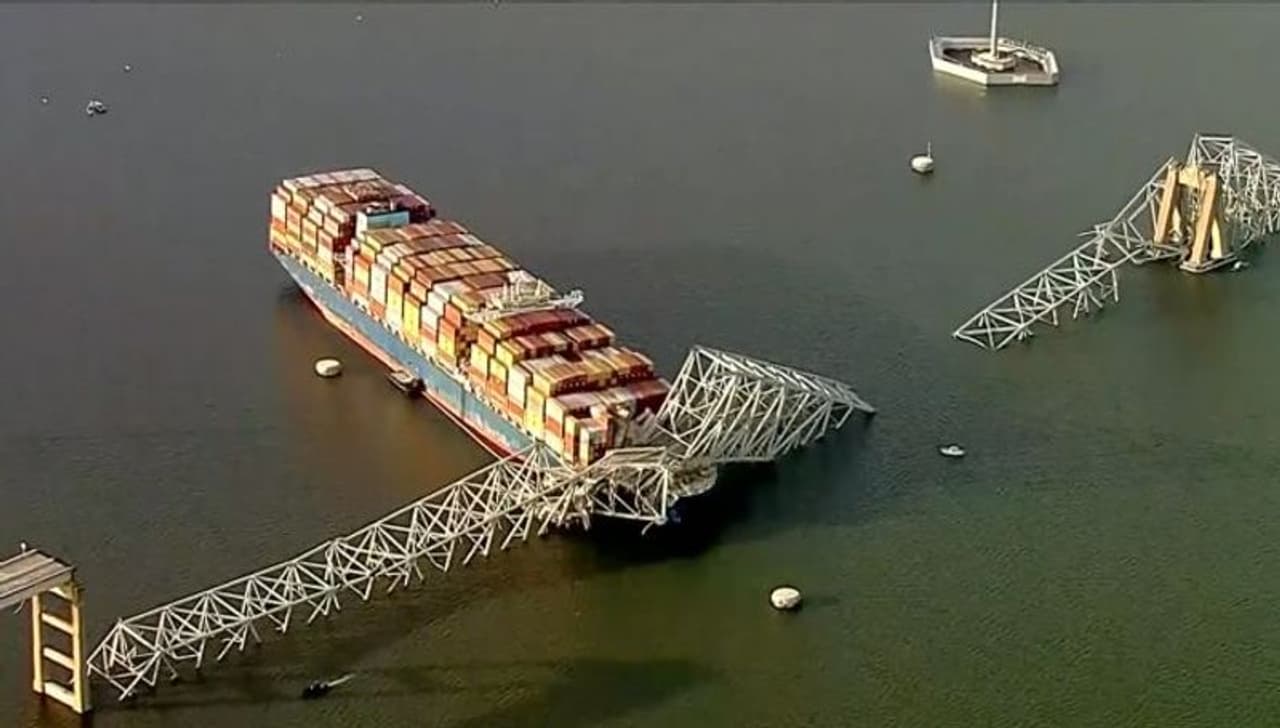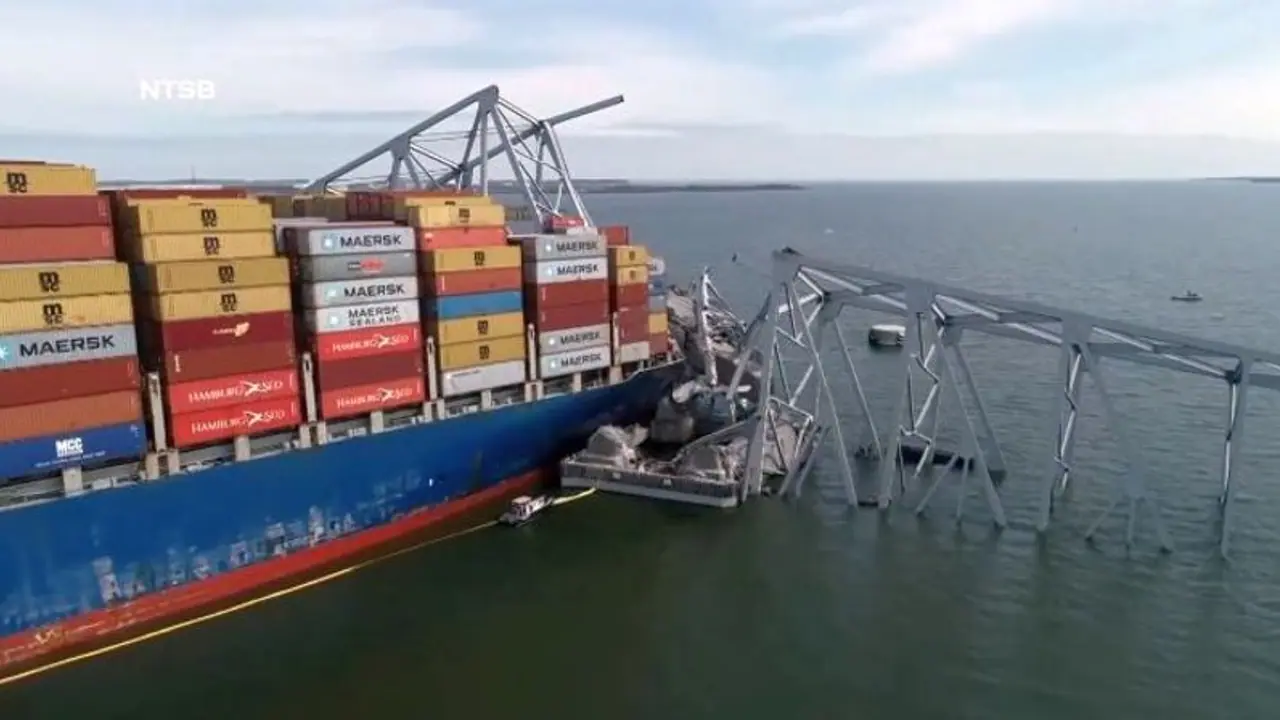NTSB Chair Jennifer Homendy stated that some containers were breached, leading to the dispersion of hazardous materials into the water, though the exact extent remains unknown. The Voyage Data Recorder (VDR) has been recovered, and interviews with the ship's crew have been conducted
The cargo ship that caused the Baltimore bridge collapse was carrying hazardous materials, the United States National Transportation Safety Board said. NTSB Chair Jennifer Homendy said there are 56 containers aboard containing hazardous materials, including corrosives, flammables and lithium-ion batteries. She said some containers were breached and a sheen was identified in the water that will be dealt with by authorities. She was unable to say how many of those hazardous materials were actually in the water.


Homendy added that the Voyage Data Recorder (VDR) has been recovered and the ship's captain, his mate, the chief engineer and one other engineer have been interviewed.
"We don't have any information of outages on board the vessel prior to that time," she said, adding, "Certainly, we are going to look at what we can get from the VDR data because there should be thirty days. So hopefully we will be able to find something in that data if the entire 30 days are there, but we are aware of the reports and that's something we need to look into."
May Take 2 Years for Probe Report to Come
The NTSB Chair mentioned the VDR is a very basic system that provides a snapshot into what happened on the ship. A full report of what happened on the DALI and the response on the bridge could take anywhere from a year to two years, according to the NTSB.
However, Homendy said the NTSB will not hesitate to issue urgent safety recommendations during that time. She claims a preliminary report should be released in two to four weeks.
"It is a massive undertaking for an investigation," Homendy said.

Timeline of Baltimore Bridge Collapse
Marcel Muise, the NTSB investigator in charge, provided the following timeline of events as provided by the recovered voyage data recorder (VDR).
12:39 am ET (10:09 IST): The ship departed from Seagirt Marine Terminal.
1:07 am ET: The ship entered the Fort McHenry Channel.
1:24:59 ET: Numerous audible alarms were recorded on the ship's bridge audio. At about the same time, VDR sensor data ceased recording. The VDR audio continued to record using the redundant power source, Muise said.
01:26:02 ET: VDR resumed recording sensor data and during this time, steering commands and rutter orders were recorded on the audio.
01:26:39 ET: The ship's pilot made a general very high frequency (VHF) radio call for tugs in the vicinity to assist. About to this time, Muise said, the pilot association dispatcher phoned the Maryland Transportation Authority (MDTA) duty officer regarding the blackout.
01:27:04 ET: The pilot ordered the Dali to drop the port anchor and ordered additional steering commands.
01:27:25 ET: The pilot issued a radio call over the VHF radio, reporting that the Dali had lost all power and was approaching the bridge. Around this time, the MDTA data shows the following also occurred: Their duty officer radioed two of their units that were already on scene due to construction on the bridge -- one on each side of the bridge -- and ordered them to close traffic on the bridge. All lanes were then shut down by MDTA.
01:29: 00 ET: The ship's speed over ground was recorded at just under 8 miles per hour. From this moment on approximately 1:29:33, the VDR audio recorded sounds consistent with the collision of the bridge. Additionally, around this time, MDTA dash cameras show the bridge lights extinguishing.
01:29:39 ET (10:59 AM IST): The pilot reported the bridge down over the VFH radio to the Coast Guard.
Two Bodies Recovered
Maryland authorities announced that divers had retrieved two bodies during the search for workers who plunged into the water following a collision between a cargo ship and the Francis Scott Key Bridge on Tuesday.
Divers recovered a red pickup truck submerged under approximately 25 feet of water in the bridge's middle span, with two bodies trapped inside. Maryland State Police Superintendent Col Roland Butler identified the victims as Alejandro Hernandez Fuentes, 35, of Baltimore, and Dorlian Castillo Cabrera, 26, of Dundalk. Families of the deceased have been notified.
Due to the challenging conditions surrounding the wreckage, authorities are transitioning from a recovery mode to a salvage operation. Butler explained that the superstructure and debris make it unsafe for divers to continue operating in the area.
Tragically, four other construction workers remain missing and are presumed dead. These workers hailed from Mexico, Guatemala, Honduras, and El Salvador, according to Butler. Despite exhaustive search efforts, authorities believe the remaining victims and vehicles are encased in superstructures and concrete from the collapsed bridge, based on sonar scans.
